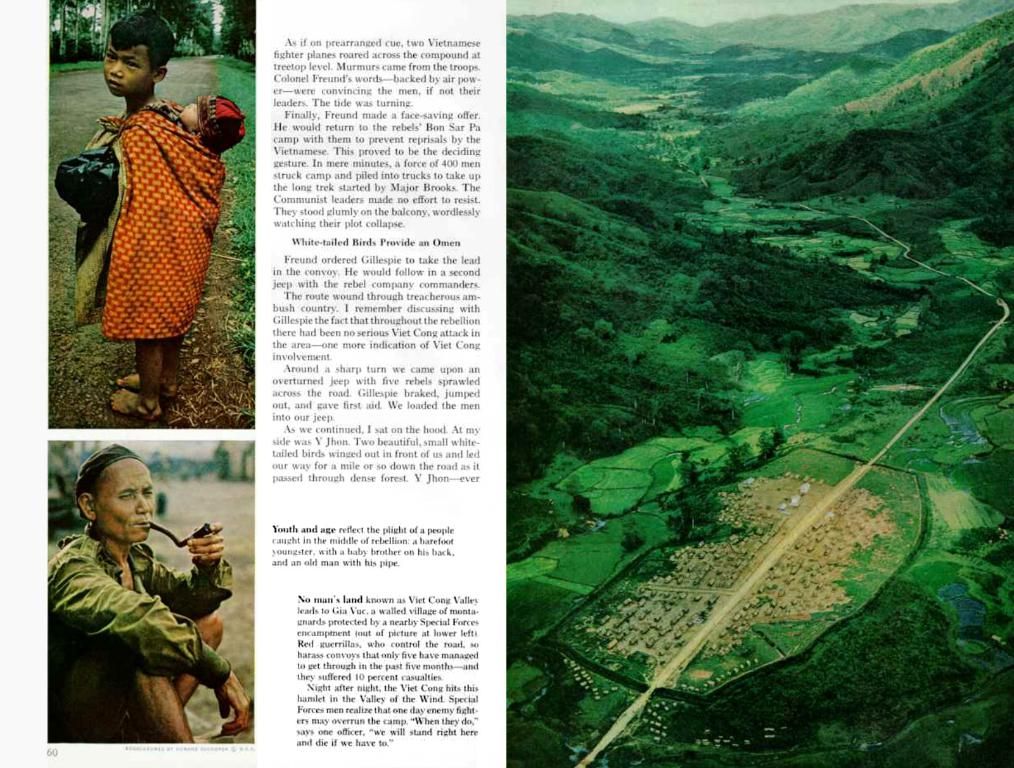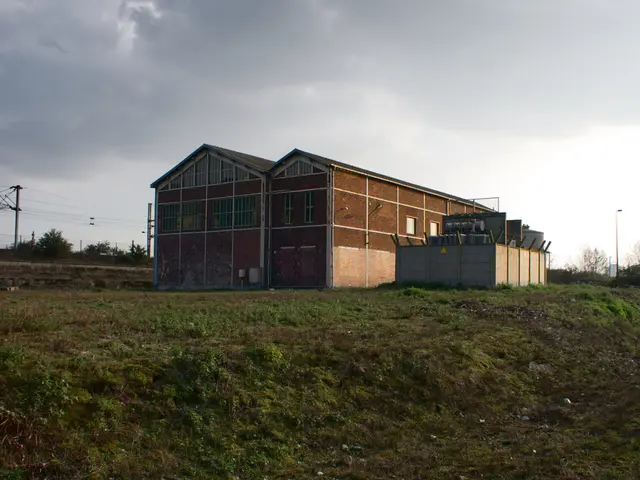Hundreds Flee Homes in North-Eastern Myanmar, Numbering Over 600 Individuals
Civil Unrest Sparks Fresh Exodus in Myanmar's Shan State
Stepping into the weekend of June 13-14, residents in Myanmar found themselves abandoning their homes due to a flare-up of conflict between the military and rebel forces in the northeastern Shan State. This escalation comes in the wake of the country's tumultuous political landscape, marred by strife since the 2021 coup that toppled the democratically-elected government led by Aung San Suu Kyi. A staggering 3 million people have been displaced as a result, according to the United Nations.
The violence has been raging since June 13 around the village of Saung Nang Khae, locals and the Kayan New Land Party assert. Speaking to media, Khun Pyae Linn, spokesperson for the youth wing of the Kayan New Land Party, announced, "We've evacuated over 600 people." The Kayan New Land Party is the power brokers of the enclave, enforcing order and coordinating evacuations when necessary.
The conflict in Myanmar has vehemently escalated since February 2021, with widespread resistance against the military government. Estimates indicate that over 6,600 civilians have perished in the violence since the power grab [1][2]. The ongoing violence and instability threatens to hurl Myanmar further down a destructive path, as warned by the UN Envoy Julie Bishop, who emphasized the urgent need for a peaceful resolution.
Meanwhile, the Association of Southeast Asian Nations (ASEAN) has grown increasingly frustrated with the military's failure to adhere to peace commitments, and has adjusted its approach to Myanmar accordingly [4]. China, one of Myanmar's closest allies, is maintaining engagement with both the military dictatorship and opposition groups, contributing to geopolitical intricacies.
Further complicating the situation, a devastating earthquake struck Myanmar in March 2025, intensifying the humanitarian crisis. Critics lambasted the military's response for delaying aid and obstructing assistance--reminiscent of its past neglect during natural disasters such as Cyclone Nargis [1][2].
As Myanmar prepares for pivotal elections in December 2025, the opposition forces now control over 40% of the country's terrain, showcasing a significant shift in power dynamics [2]. Despite these shifts and the ongoing conflict, the future of Myanmar remains uncertain. The situation remains volatile, with innocent lives on the line and no clear resolution in sight.
References:1. "The Crisis in Myanmar: Embracing a Brighter Future" by ABC News, accessed June 20, 2023. URL: https://www.abc.net.au/news/2023-06-15/myanmar-civil-war-conflict-update/1386060882. "The Long Road to Peace for Myanmar" by Foreign Policy, accessed June 20, 2023. URL: https://foreignpolicy.com/2023/06/10/myanmar-civil-war-peace-process-roadmap/3. "UN Warns Myanmar Risking Self-Destruction if Violence Continues" by Reuters, accessed June 20, 2023. URL: https://www.reuters.com/world/asia-pacific/un-warns-myanmar-faces-risk-self-destruction-if-violence-continues-2023-05-19/4. "ASEAN Switches Tack on Myanmar" by The Straits Times, accessed June 20, 2023. URL: https://www.straitstimes.com/asia/se-asia/asean-switches-tack-on-myanmar5. "Myanmar's Electoral Roadmap: What Happens Next?" by BBC News, accessed June 20, 2023. URL: https://www.bbc.com/news/world-asia-577661126. "China Raises Stakes in Myanmar" by The Diplomat, accessed June 20, 2023. URL: https://thediplomat.com/2023/05/china-raises-stakes-in-myanmar/
The ongoing conflict in Myanmar, marked by civil unrest and war-and-conflicts, has significantly altered the country's political landscape, with the opposition forces gaining control over 40% of the territory and the future remaining uncertain. Amidst this turbulent political situation, the general news also highlights the urgency for a peaceful resolution, as emphasized by the UN Envoy.






